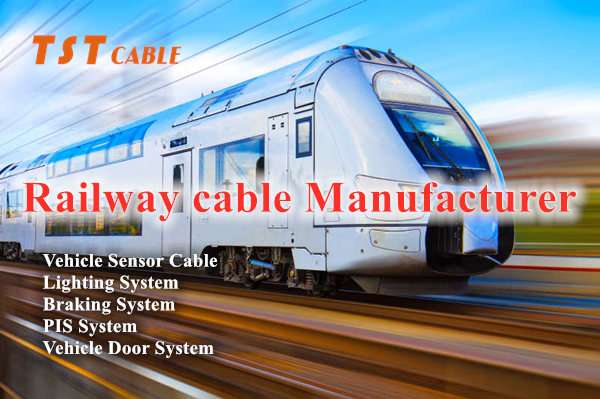When we talk about the aging of railway cables, we must recognize the importance of the causes and preventive measures of wire aging. Wire aging is a complex process involving multiple factors, including environmental factors, material factors, and usage factors. In rail transit, wire aging may lead to serious safety problems. Therefore, we need to have a deep understanding of its causes and take preventive measures.

Causes of cable aging
1. Aging of the material itself: During the use of wires, the insulation material will gradually age and its performance will decline due to factors such as temperature, humidity, and chemical corrosion.
2. Damaged wires: During operation, wires may be damaged by external forces, wear, etc., resulting in damage to the insulation layer and accelerating the aging process.
3. Joint failure: Wire joints are an important part of wire aging. Joint failures may cause local overheating, short circuits, etc., and then cause safety accidents such as fires.
01
Material quality analysis
Material quality is an important factor affecting the aging of rail transit wires. The following analyzes material quality factors from several aspects:
Insulating materials: The quality of insulating materials is directly related to the service life of wires. High-quality insulating materials should have good heat resistance, corrosion resistance, and aging resistance.
Conductor materials: The quality of conductor materials has an important impact on the conductivity and mechanical strength of wires. High-quality conductor materials should have low resistivity, high mechanical strength and good corrosion resistance.
02
Operation environment analysis
The rail transit operation environment also has a great impact on the aging of wires. The following analyzes several main factors:
1. Temperature: High temperature environment will accelerate the aging of insulating materials and reduce the service life of wires.
2. Humidity: High humidity environment is prone to cause moisture in wires and reduce insulation performance.
3. Chemical corrosion: There may be chemically corrosive substances such as acids, alkalis, and salts along the rail transit line, which will corrode the wires.
Preventing cable aging
In order to prevent the aging of rail transit wires, materials with good aging resistance can be selected during the design and procurement of wires. During the use of cables, the environment along the rail transit line should be monitored, and chemical substances that may corrode the wires should be discovered and handled in time. Strengthen daily inspection and maintenance of wires to ensure that the wires are in good condition. In addition, regular training of maintenance personnel and improving maintenance levels can also prevent cable aging to a certain extent.
The problem of wire aging is related to operational safety, especially in the rail transit industry, and must be taken seriously. By analyzing the causes of aging, strengthening material quality management, improving the operating environment, improving maintenance levels, and formulating regular inspection and update strategies, wire aging can be effectively prevented to ensure rail transit operation safety.
Finally, I would like to remind everyone that when purchasing wires and cables, you must identify regular manufacturers to ensure that the products meet the relevant qualification requirements of rail transit, and do not buy some unqualified wires because of the low price.
TST CABLES focuses on cable applications and solutions in the field of rail transit. It is an early domestic manufacturer of rail transit cables that has passed the loading and operation assessment. After 13 years of deep cultivation in the field of rail transit, the products produced meet the relevant certification standards, such as EN45545-2, TB/T1484.3 and other standards. At the same time, it has also passed relevant certifications of China Railway, such as EMU standards TJ/CL313-2014, GB/T 42740-2023 and CRCC certification.
The main products include EN50264 series, EN50306 series, EN50382 series, thinned cables, data cables, sensor cables, jumper cables, high temperature resistant cables, high cold cables, etc.
The supporting product fields involve vehicle equipment, such as traction systems, network systems, jumper systems, driver control systems, braking systems, etc., and railway signals such as vehicle-ground wireless communication systems, train operation control systems, computer interlocking systems, track circuits and automatic blocking systems, etc.
Also available in:
English




